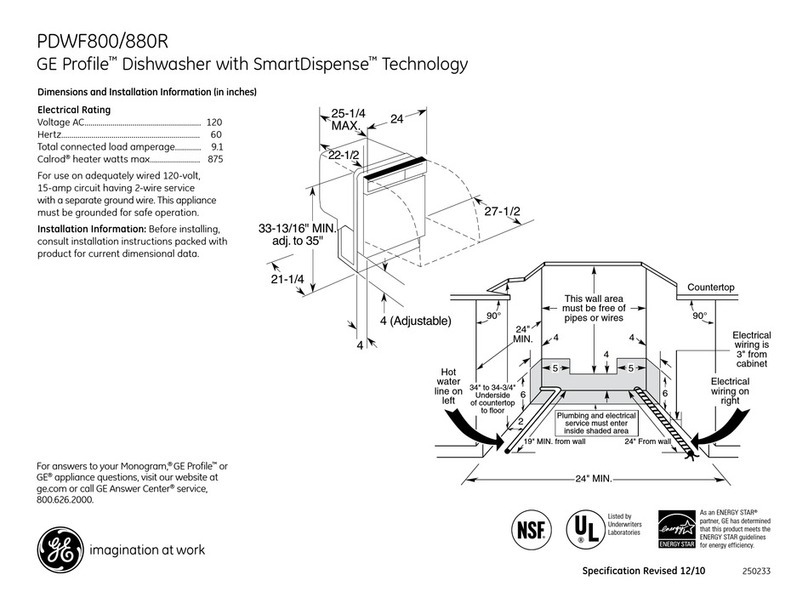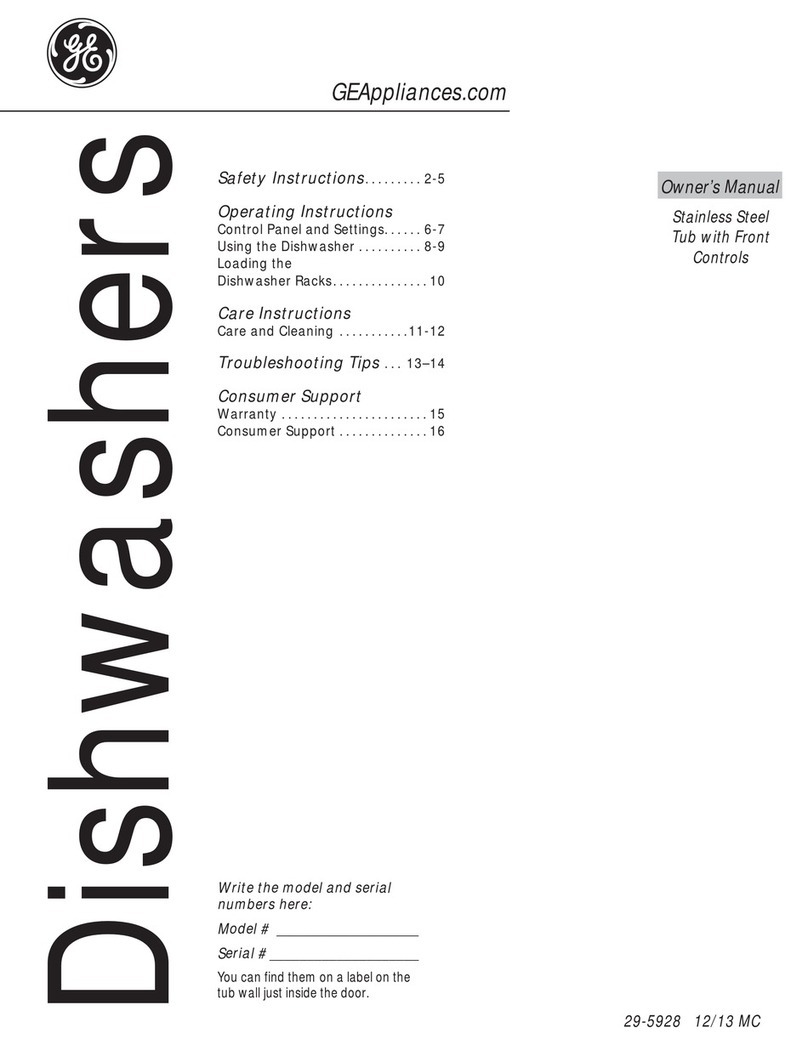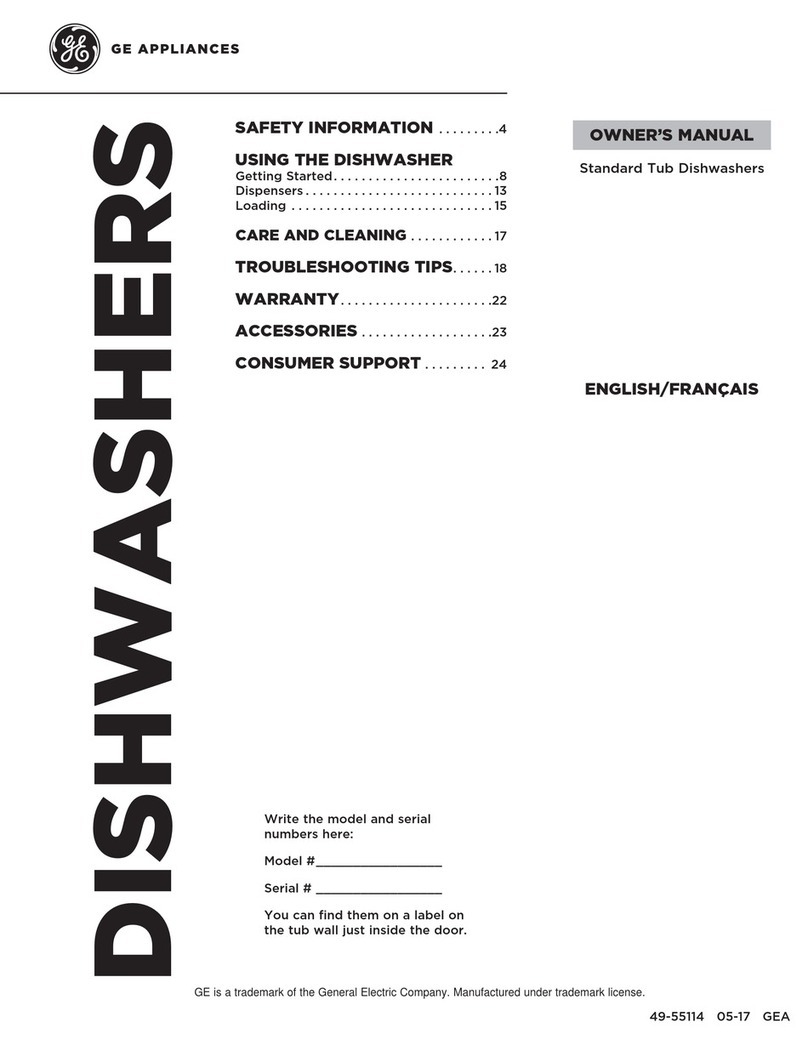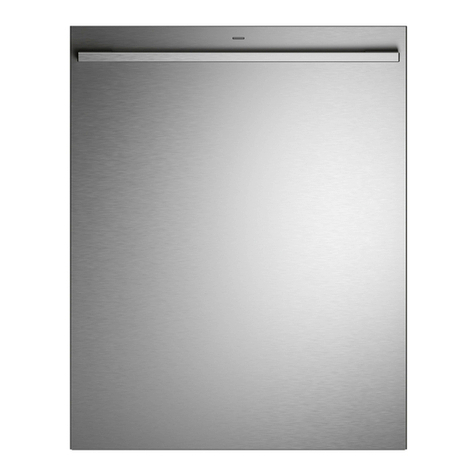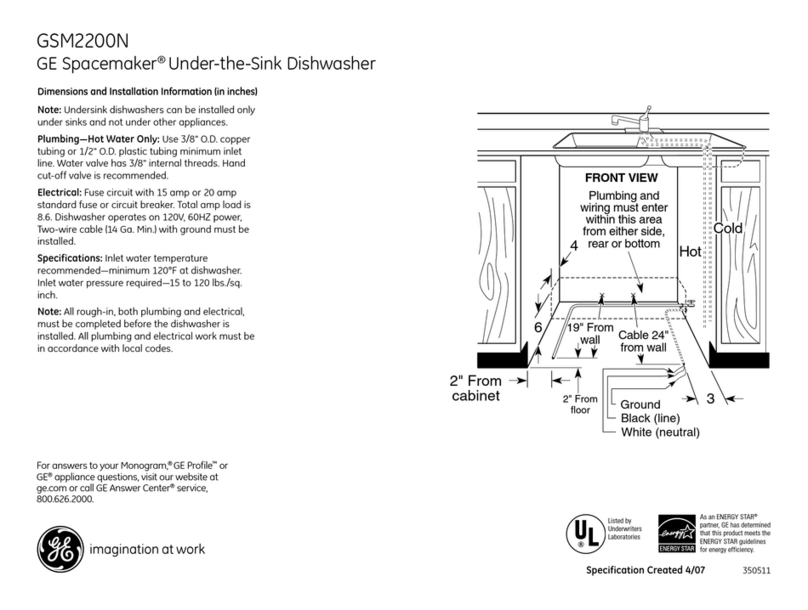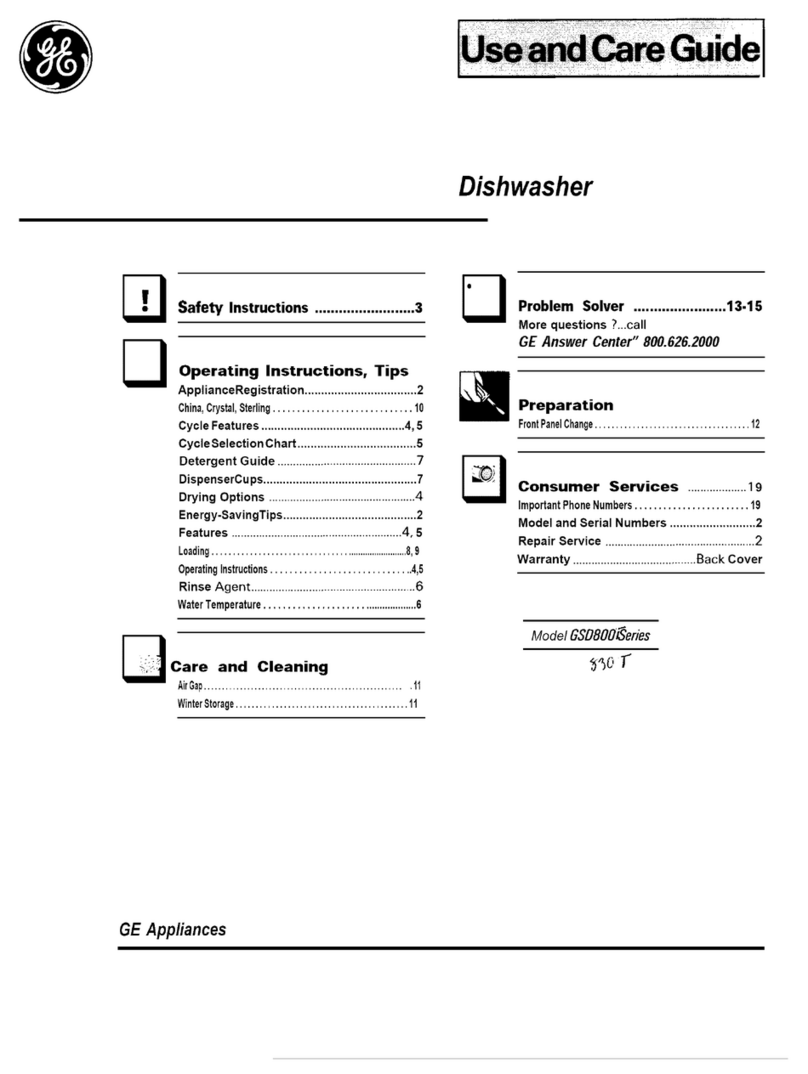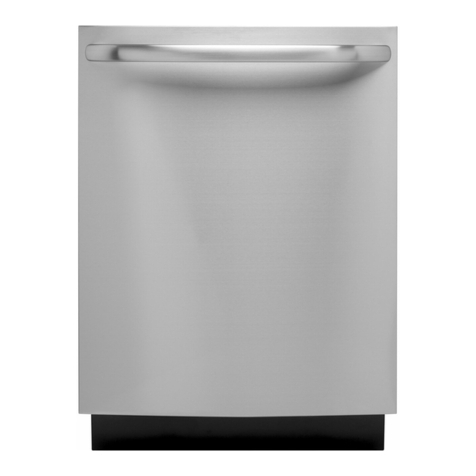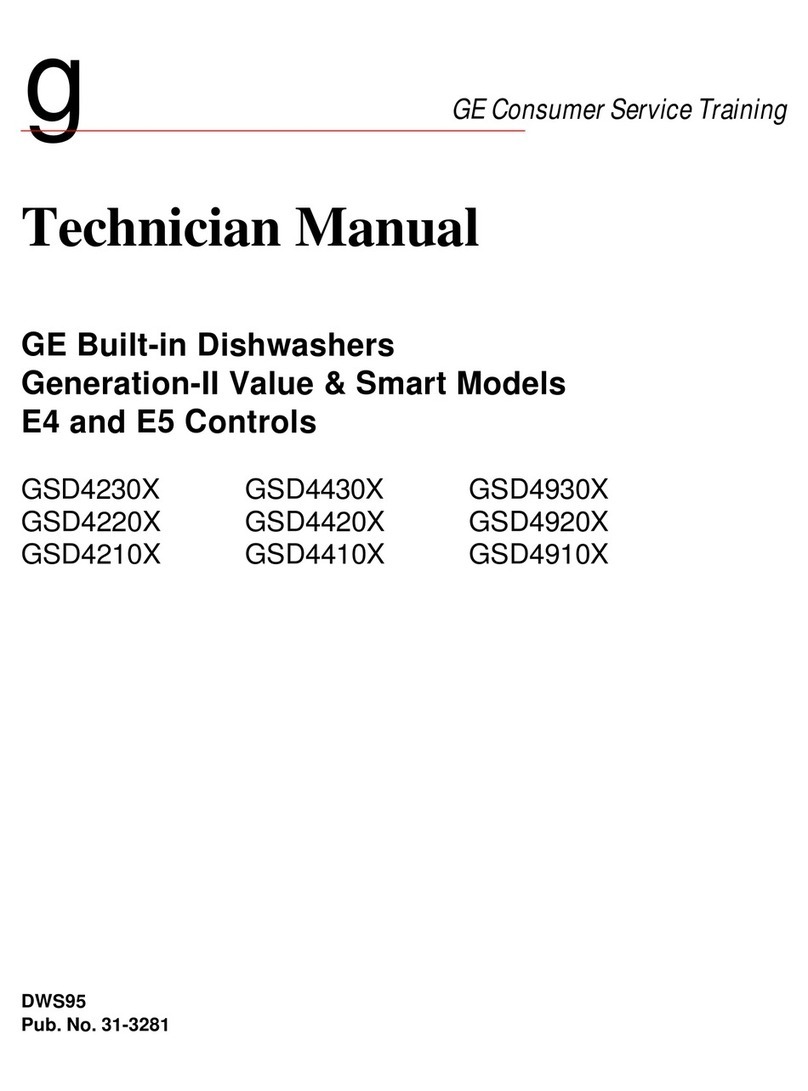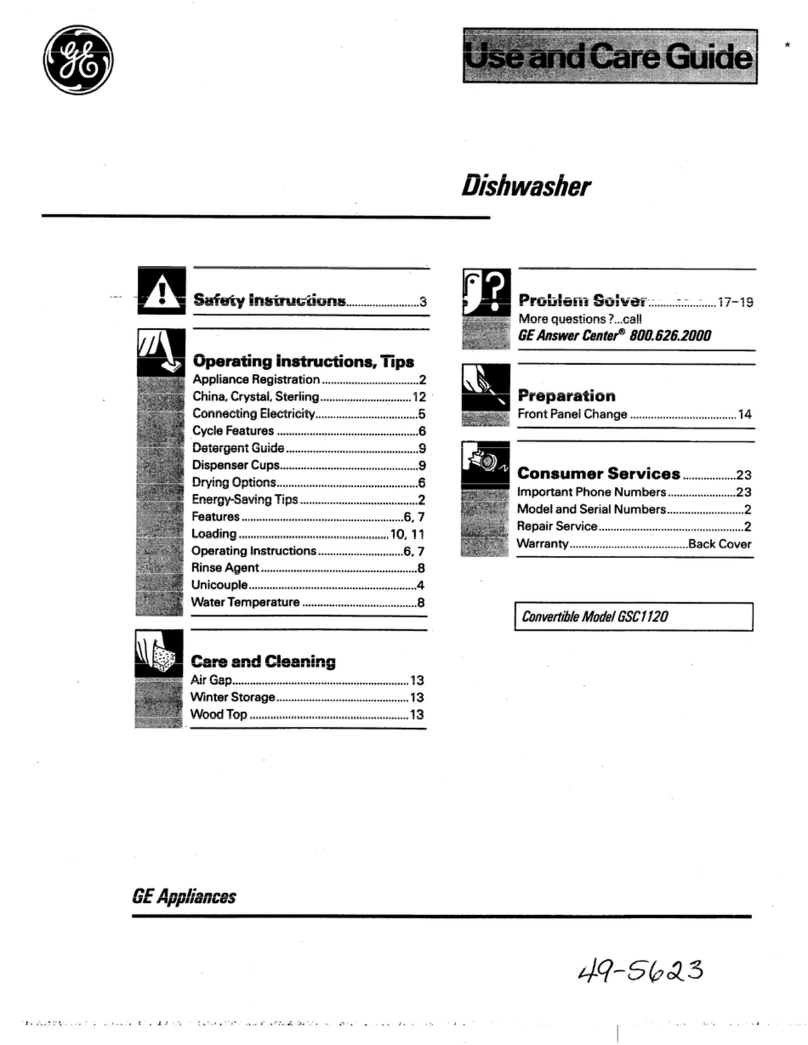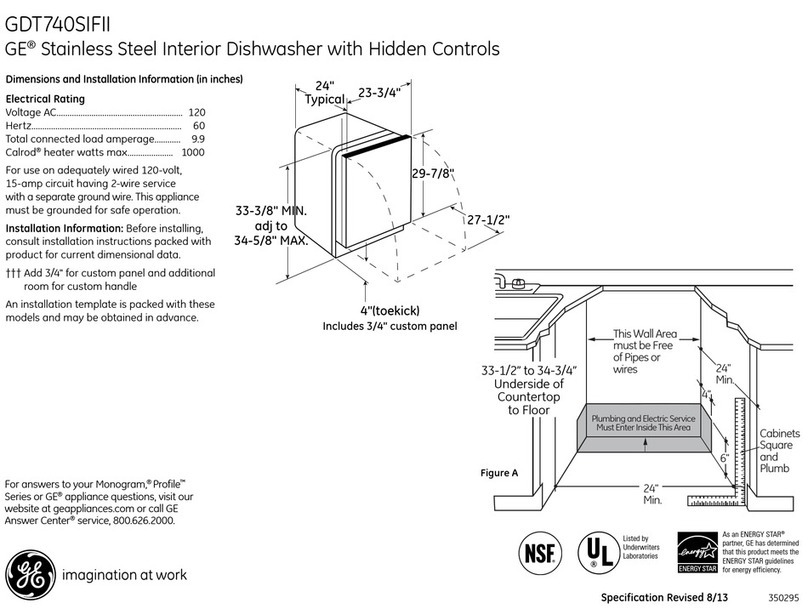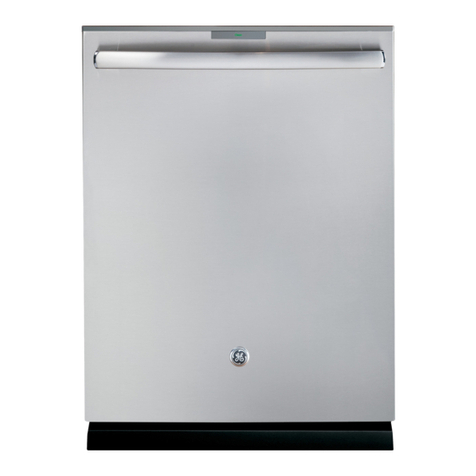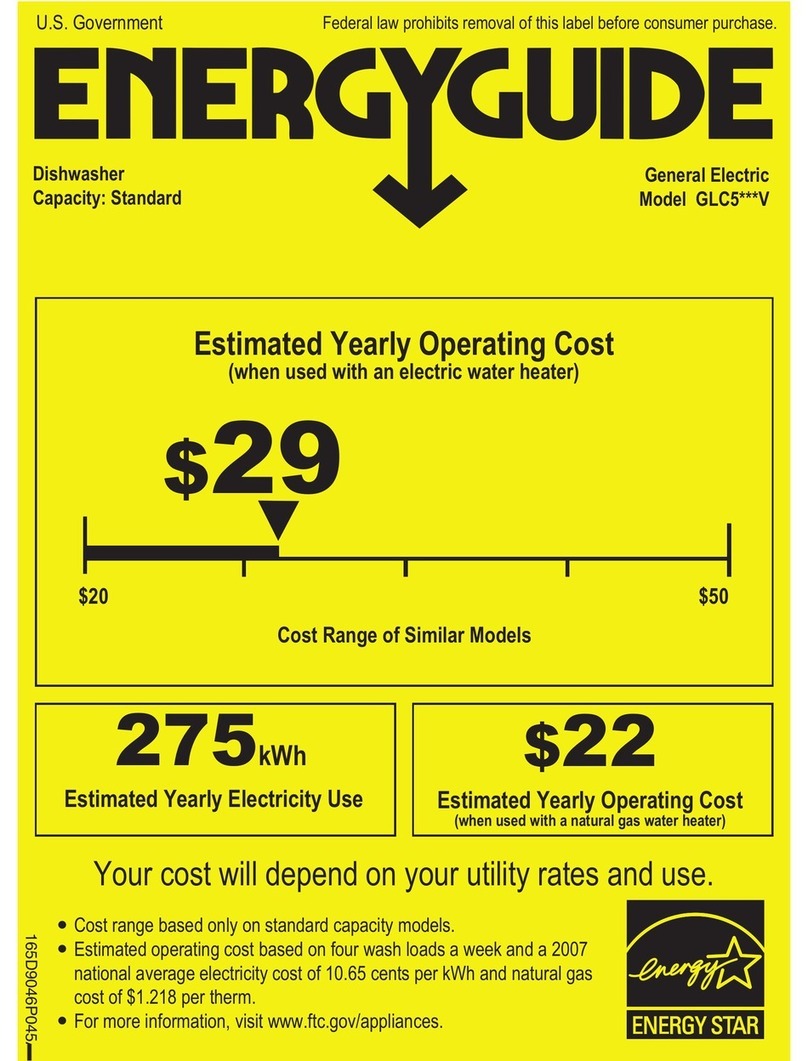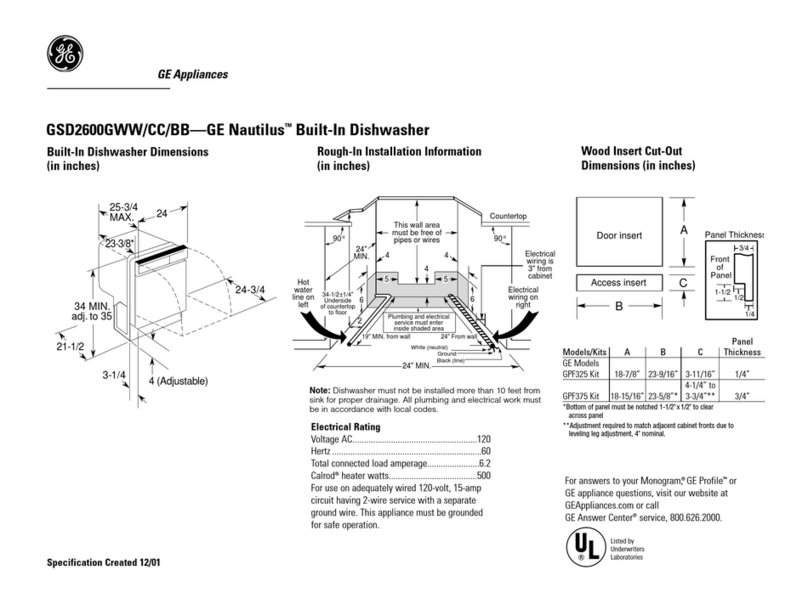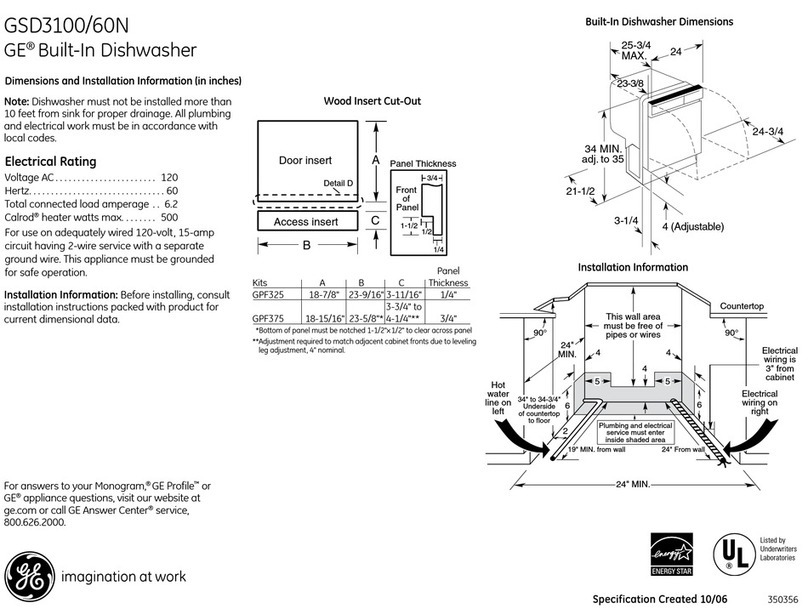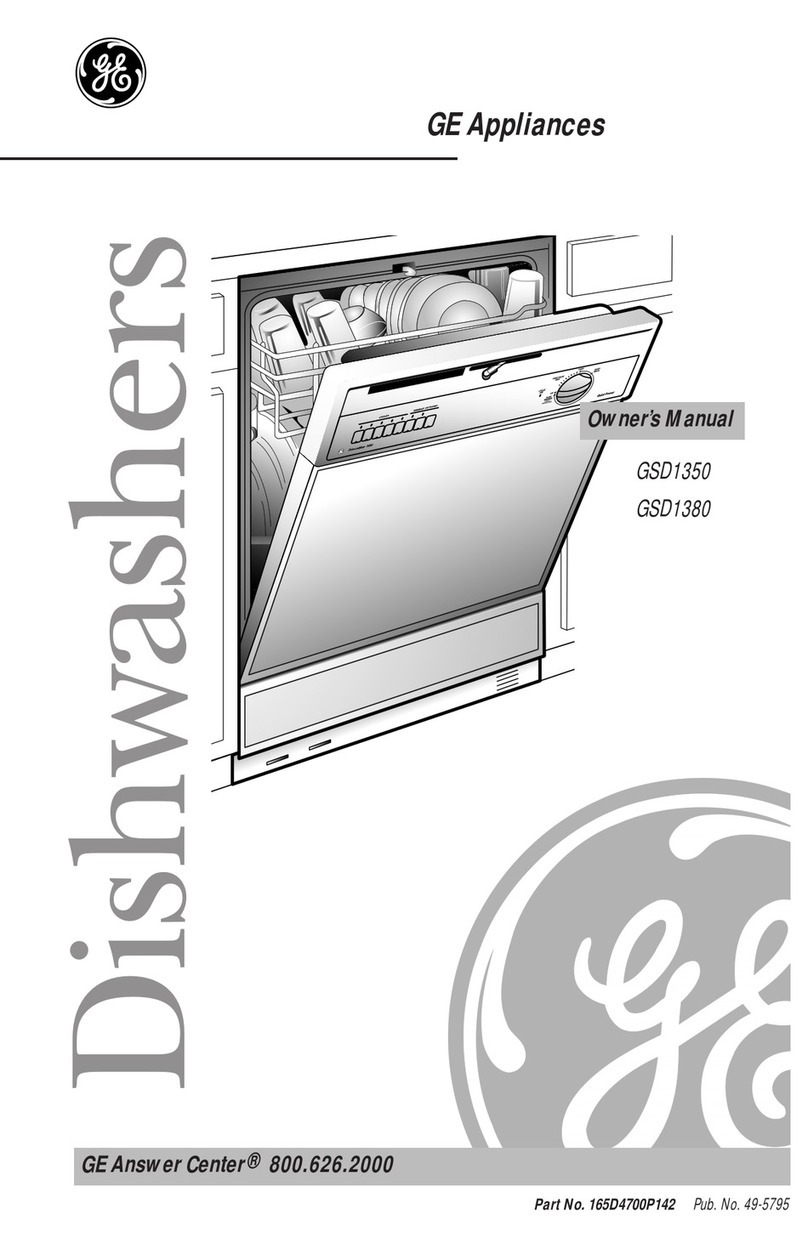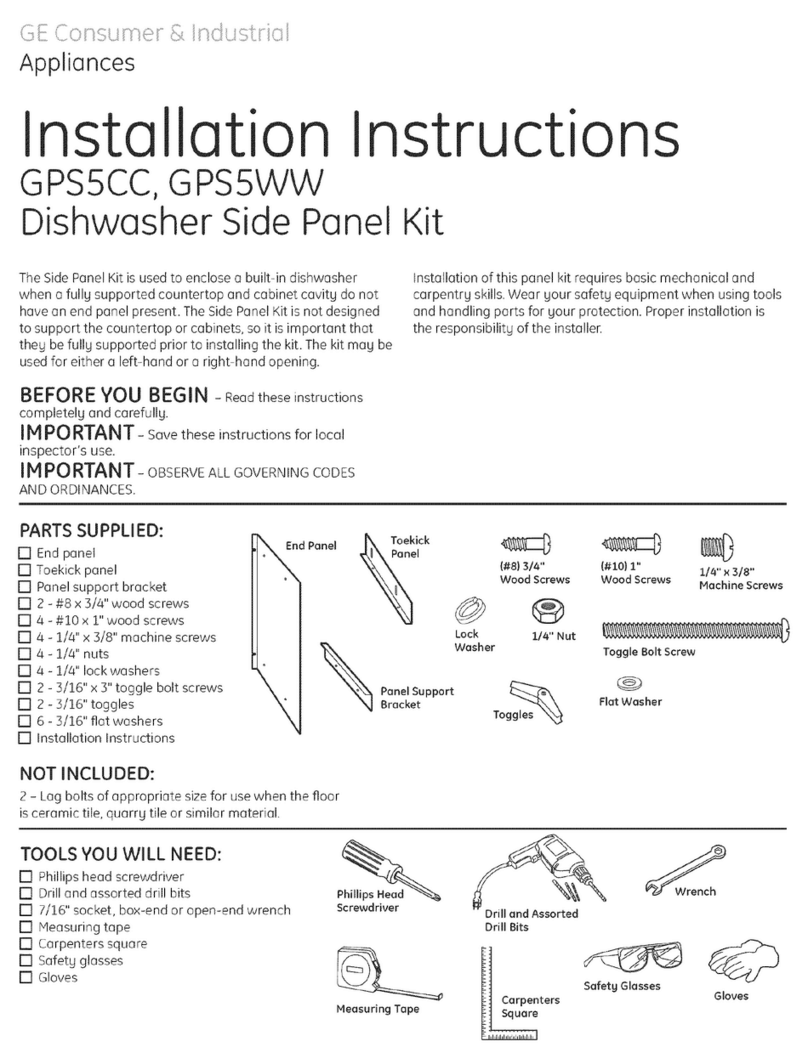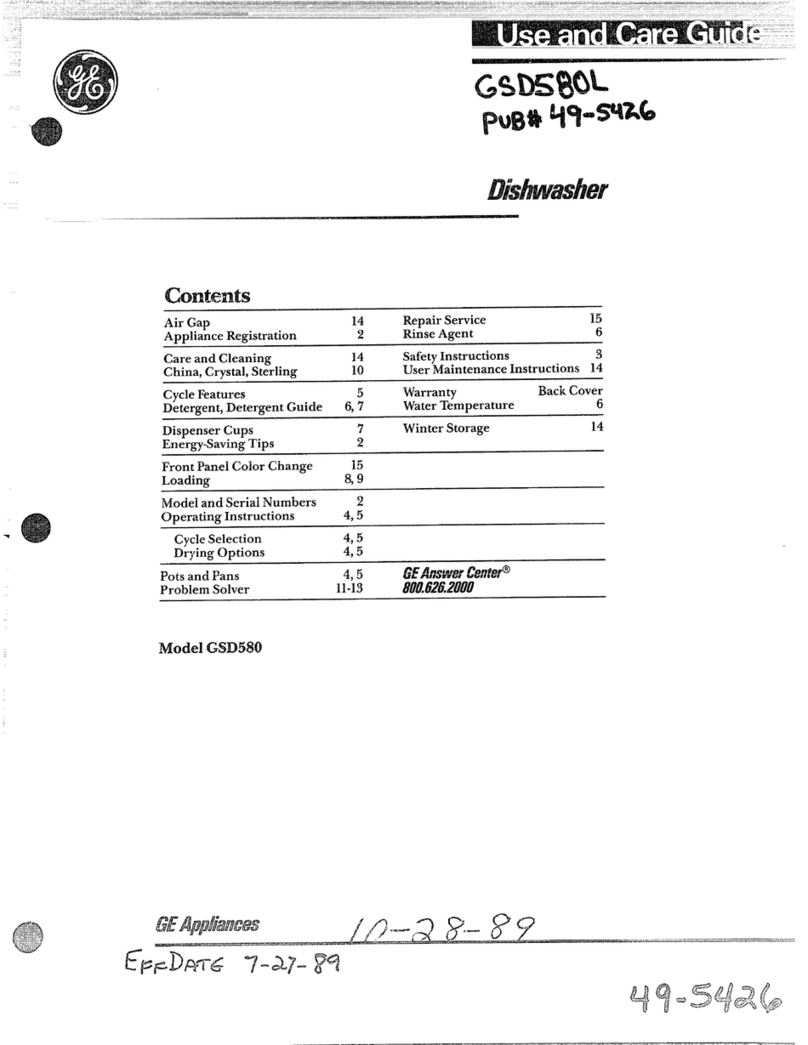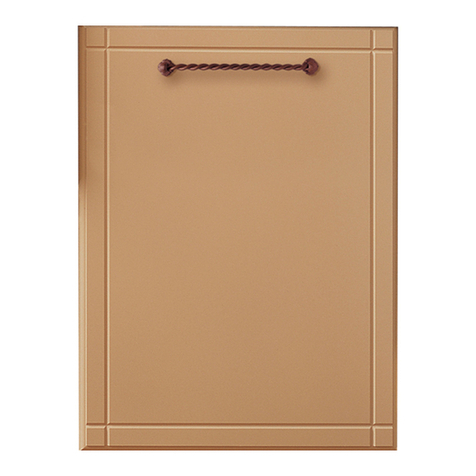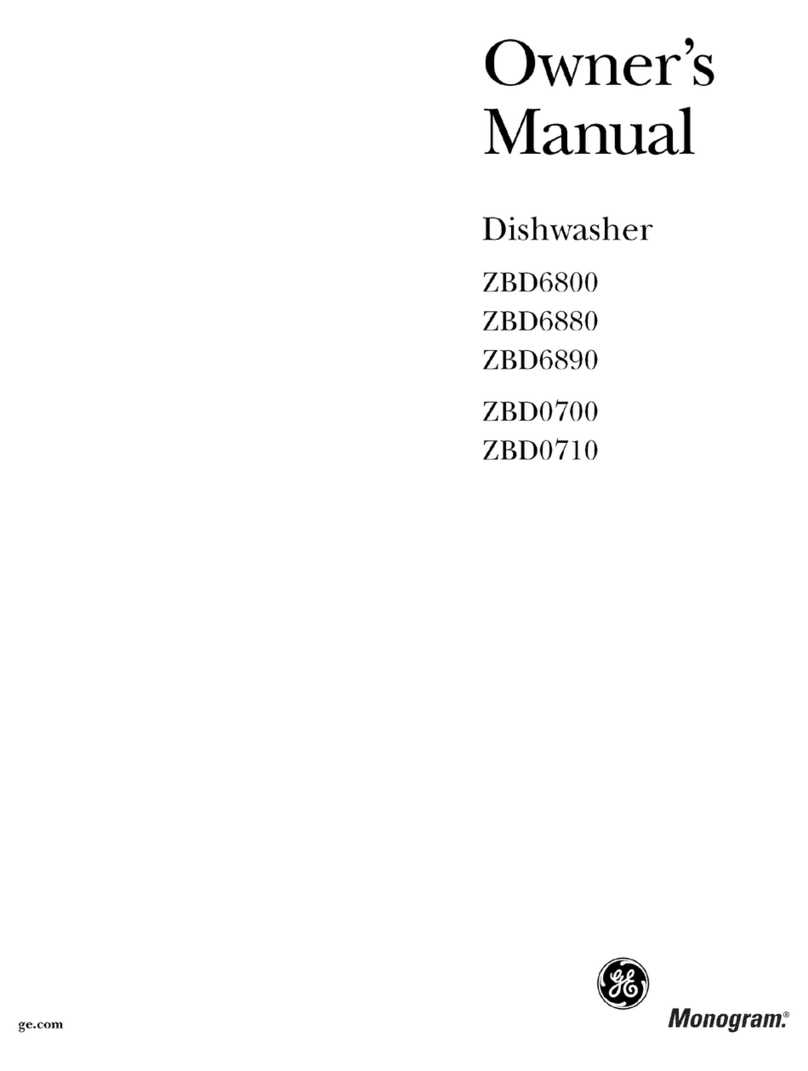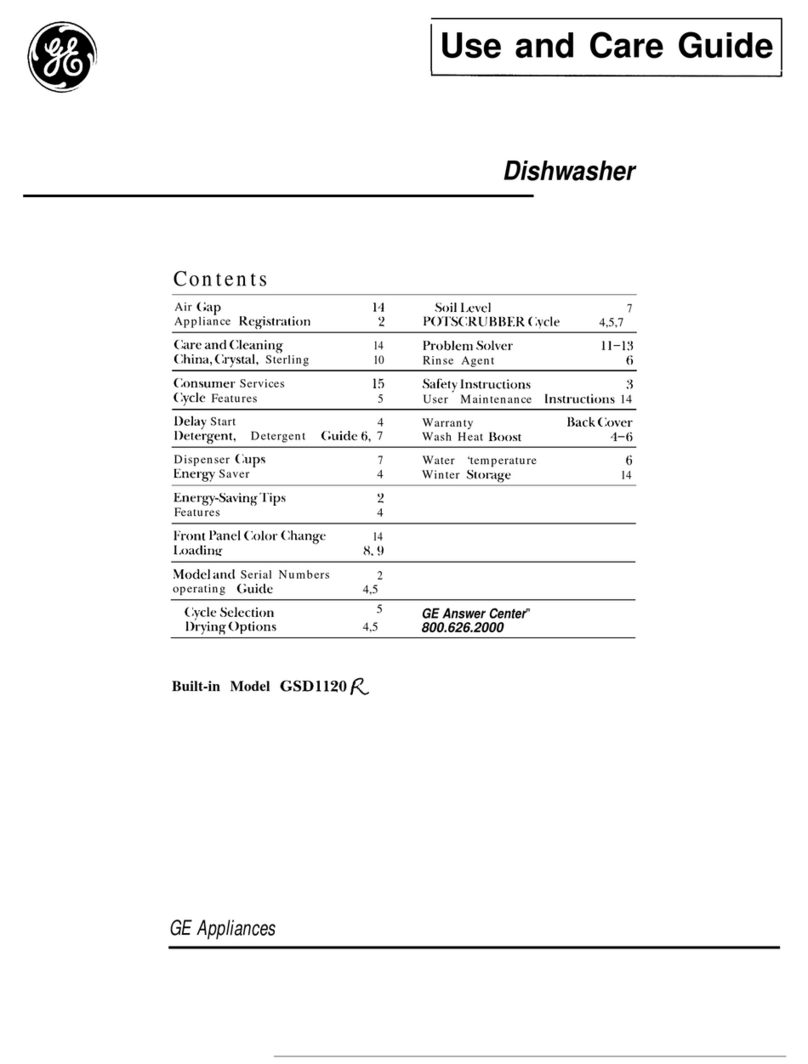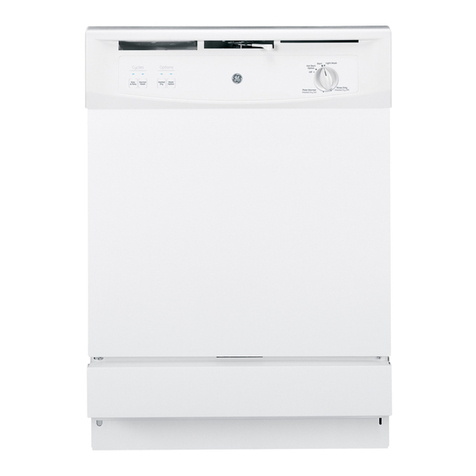Operating nstructions Safety nstructionsConsumer Support Troubleshooting Tips
8
Filling the Dispenser
Fill the rinse agent dispenser until it reaches the bottom of
lip inside the opening. Replace cap.
To check if rinse agent is needed, remove the cap and look
into the dispenser.
A full di pen er hould la t about one month.
If the rin e agent pill , wipe up the exce .
Check the Water Temperature
The entering water must be at least 12 °F and
not more than 15 °F, for effective cleaning and to
prevent dish damage. Check the water temperature
with a candy or meat thermometer. Turn on the
hot water faucet nearest the dishwasher, place
the thermometer in a glass and let the water
run continuously into the glass until the temperature
stops rising.
Adjust the maximum/minimum temperature of the
water heater if necessary to deliver water at the
proper temperature.
U e Jet-Dry®Rin e Agent
Proper U e of Detergent
Jet-Dry®or Cascade Crystal Clear®rinse agents remove spots and prevent new film buildup on dishes,
glasses, flatware, cookware and plastic.
Use only detergent specifically made for use in
dishwashers. Cascade®and Electrasol®Automatic
Dishwashing Detergents have been approved for use
in all GE dishwashers. Keep your detergent fresh and
dry. Don’t put powder detergent into the dispenser
until you’re ready to wash dishes.
The amount of detergent to use depends on whether
your water is hard or oft. With hard water, you need
extra detergent. With soft water, you need less
detergent.
Protect your dishes and dishwasher by contacting
your water department and asking how hard your
water is. Twelve or more grains is extremely hard
water. A water softener is recommended. Without it,
lime can build up in the water valve, which could
stick while open and cause flooding. Too much
detergent with soft water can cause a permanent
cloudiness of glassware, called etching.
Use the information in the table below as a guideline
to determine the amount of automatic dishwasher
detergent to place in the dispenser.
You’ll find two detergent dispensers on the inside door
of your dishwasher. All wash cycles require detergent
in the main cup.
When
using automatic dishwashing
detergent tabs, simply place one tab in the main cup
and close.
Be sure the Dial is OFF before adding detergent.
Otherwise, the
detergent cup will not close and latch
properly.
Add detergent then close the main cup.
NOTE: To open detergent cup after it has been
closed, simply turn the detergent cup handle
counterclockwise until it releases. A snapping
sound may be heard.
DO NOT USE HAND D SH DETERGENT
NOTE: U ing a detergent that i not pecifically
de igned for di hwa her will cau e the di hwa her
to fill with ud . During operation, the e ud will pill
out of the di hwa her vent , covering the kitchen floor
and making the floor wet.
Because so many detergent containers look alike,
store the dishwasher detergent in a separate space
from all other cleaners. Show anyone who may use
the dishwasher the correct detergent and where it
is stored.
While there will be no lasting damage to the
dishwasher, your dishes will not get clean using
a dishwashing detergent that is not formulated
to work with dishwashers.
Detergent Cups to Fill
Fill to 1/3 of main cup
Fill to 2/3 of main cup
Fill main cup
Fill
main cup and open cup
Number
of Grains
Less than 4
4 to 8
8 to 12
Greater than 12
Open cup
Main cup
Using the dishwasher

